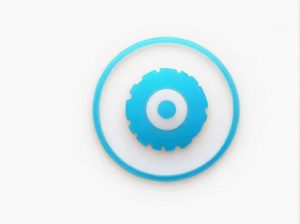In the world of manufacturing and business reducing mistakes is crucial to improving efficiency and product quality. One method designed to prevent human errors is Poka-Yoke. This Japanese term is widely used in quality control systems to eliminate defects before they occur.
Understanding Poka-Yoke can help businesses improve their production processes enhance customer satisfaction and reduce operational costs. This guide will explain the meaning of Poka-Yoke how it works and why it is essential in various industries.
What Is Poka-Yoke?
Definition of Poka-Yoke
Poka-Yoke (ポカヨケ) is a Japanese term that means “mistake-proofing” or “error prevention.” It was introduced by Shigeo Shingo an engineer at Toyota as part of the Toyota Production System (TPS).
The purpose of Poka-Yoke is to prevent human errors in manufacturing assembly and other business processes by using simple design features or automatic mechanisms. These measures help ensure that mistakes do not happen or are detected before they cause defects.
Literal Meaning of Poka-Yoke
The term Poka-Yoke comes from:
- Poka (ポカ) – Meaning “inadvertent mistake”
- Yoke (ヨケ) – Meaning “avoidance” or “prevention”
Together Poka-Yoke refers to techniques that help avoid unintentional errors.
Why Is Poka-Yoke Important?
1. Prevents Defects at the Source
Poka-Yoke is designed to catch errors before they happen ensuring that defects do not reach the customer. This improves product quality and reliability.
2. Reduces Production Costs
By eliminating mistakes early in the process businesses save money on rework repairs and waste management. It also reduces the need for excessive quality inspections.
3. Improves Workplace Efficiency
Mistake-proofing systems help employees work more efficiently by removing unnecessary complexity and reducing the chance of human errors.
4. Enhances Customer Satisfaction
Products and services with fewer defects lead to happier customers improved brand reputation and increased customer loyalty.
Types of Poka-Yoke Methods
1. Prevention-Based Poka-Yoke
This method focuses on designing processes or products in a way that errors cannot occur. Examples include:
- USB ports that fit only one way preventing incorrect insertion.
- Car ignition systems that prevent shifting gears unless the brake is pressed.
2. Detection-Based Poka-Yoke
This method identifies errors before they cause defects and alerts the operator to take corrective action. Examples include:
- ATMs that beep if a card is left behind.
- Warning lights in cars that indicate low fuel or an open door.
Examples of Poka-Yoke in Different Industries
1. Manufacturing and Production
Manufacturers use Poka-Yoke to improve quality control in factories. Examples include:
- Color-coded parts to prevent incorrect assembly.
- Automatic machines that stop if a defective part is detected.
2. Automotive Industry
The car industry applies Poka-Yoke to enhance safety and usability. Examples include:
- Seatbelt alarms that beep if the driver does not buckle up.
- Keyless car ignitions that prevent accidental key removal while driving.
3. Healthcare Sector
Poka-Yoke is used in hospitals and pharmacies to reduce medical errors. Examples include:
- Barcode scanning for medicine to ensure the correct prescription is given.
- Different-sized connectors for oxygen and nitrogen to prevent misconnection.
4. Retail and Customer Service
Retail businesses use Poka-Yoke to prevent transaction mistakes. Examples include:
- Cash registers that require confirmation before large transactions.
- Self-checkout machines that alert users to unpaid items.
How to Implement Poka-Yoke in a Business
1. Identify Common Errors
The first step is to analyze where mistakes frequently occur in your process. Look at past defects customer complaints and inefficiencies.
2. Determine the Root Cause
Understanding why errors happen is essential. Are mistakes caused by human factors equipment malfunctions or process complexity?
3. Choose the Right Poka-Yoke Method
Decide whether a prevention-based or detection-based Poka-Yoke method is best for solving the problem.
4. Design Simple and Effective Solutions
Poka-Yoke techniques should be easy to use cost-effective and reliable. Avoid solutions that are too complicated or expensive.
5. Monitor and Improve
Once implemented continuously monitor the effectiveness of the Poka-Yoke system and make improvements if needed.
Common Mistakes When Applying Poka-Yoke
1. Overcomplicating the Process
Poka-Yoke should be simple and easy to integrate. Complex solutions can create confusion and reduce efficiency.
2. Ignoring Employee Feedback
Workers often have valuable insights about where errors occur and how to prevent them. Ignoring their input can lead to ineffective solutions.
3. Not Testing the System
A poorly tested Poka-Yoke system can cause new problems instead of solving existing ones. Always verify its effectiveness before full implementation.
4. Focusing Only on Technology
While automation can be useful not all Poka-Yoke solutions require high-tech systems. Simple visual cues or physical barriers can be just as effective.
Poka-Yoke is a powerful approach to preventing human errors and improving quality in manufacturing business and daily life. By implementing mistake-proofing techniques companies can reduce defects save costs and enhance efficiency.
Understanding and applying Poka-Yoke principles can lead to better products safer work environments and improved customer satisfaction. Whether in factories hospitals or retail stores mistake-proofing helps create a more reliable and productive system.



